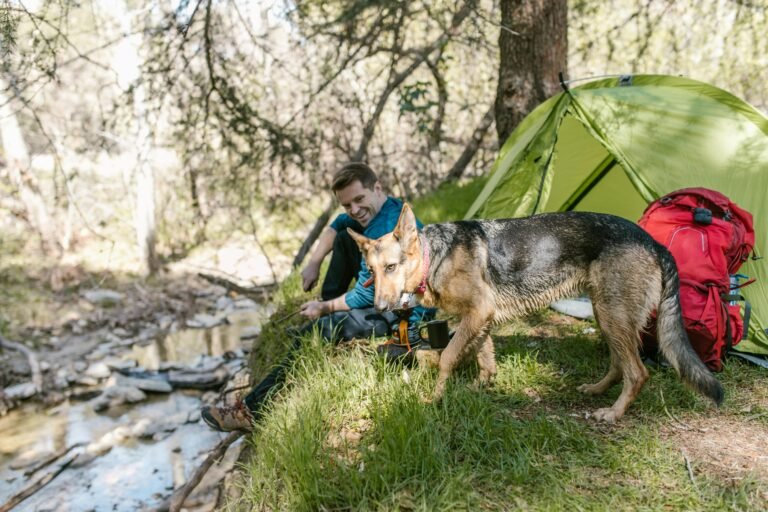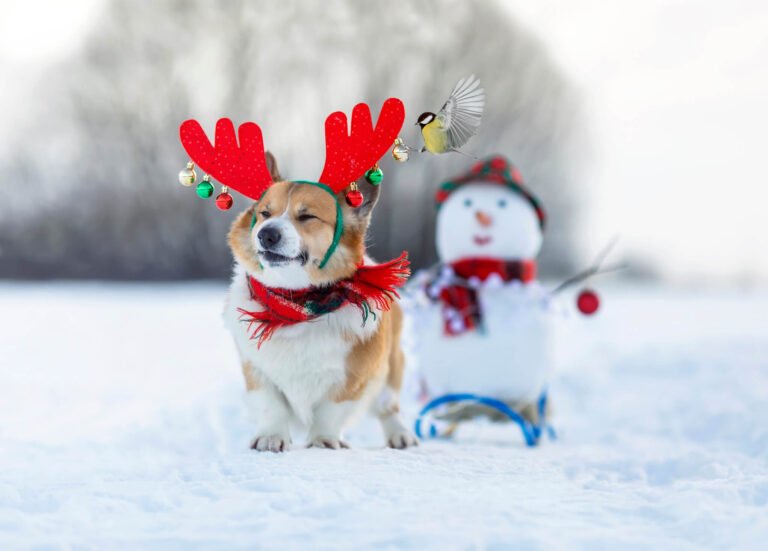Over the winter months, it’s important to find ways to keep your dog both happy and active despite the colder weather. With shorter days and chilly temperatures, your furry friend may find it challenging to stay engaged. However, by incorporating fun indoor activities, bundling up for outdoor adventures, and maintaining a consistent routine, you can ensure your canine companion enjoys a fulfilling winter season. Read on for practical tips to keep your dog lively and content throughout the colder months.
Understanding Your Dog’s Winter Needs
Your dog’s winter needs will change significantly with the colder weather. Dogs can be sensitive to lower temperatures, and understanding their requirements is imperative for keeping them safe and comfortable. Make sure to monitor your pet for signs of discomfort, such as shivering or reluctance to go outside. Providing appropriate shelter, clothing, and a cozy indoor environment will help your dog stay happy and active throughout the winter months.
Adjusting Exercise Routines
For many dogs, winter means adjusting their exercise routines. Instead of longer outdoor walks, you might opt for shorter, more frequent walks to keep your dog warm. Engaging in indoor playtime activities, like fetch or hide-and-seek, can also help burn off energy while keeping your dog active during the colder months.
Winter Nutrition and Hydration
Adjusting your dog’s diet and ensuring they stay hydrated is vital during winter months. With increased physical activity to stay warm, your dog may require more calories to maintain their energy levels. Additionally, ensure your dog has access to fresh water, as they can be less inclined to drink when temperatures drop, leading to potential dehydration.
Due to the decreased activity levels and unique environmental conditions of winter, your dog’s nutritional needs may shift. Consider incorporating high-quality, calorie-dense foods that provide necessary nutrients and energy. Also, keep an eye on your dog’s hydration; dogs can be less thirsty in colder weather, but they still need to drink enough water daily. Offering warm water can encourage them to hydrate while providing comfort in the chilly season.
Indoor Activities to Keep Your Dog Engaged
Some dogs can become restless during the winter months when outdoor activities are limited. To keep your furry friend engaged and active indoors, consider setting up a variety of fun activities. Whether it’s interactive playtime or training sessions, there are numerous ways to challenge your dog’s mind and maintain their energy levels right in the comfort of your home.
Interactive Toys and Games
Indoor play is important for your dog’s physical and mental stimulation. Interactive toys, like puzzle games, can keep your dog entertained for hours by encouraging them to problem-solve and think creatively. You can also create treasure hunts with treats hidden around your home or engage your pet in tug-of-war with a sturdy rope toy. These activities not only keep them busy but also strengthen your bond with your beloved canine companion.
Training Opportunities During Winter
Among the valuable ways to keep your dog engaged during winter are training opportunities that refine their skills. Winter can be the perfect time to teach your dog new tricks or reinforce basic commands. Use indoor sessions to focus on obedience training, practicing commands like “sit,” “stay,” or “leave it.” These sessions provide mental stimulation and can help reduce any pent-up energy, ensuring your dog remains well-mannered and happy throughout the season.
Interactive training sessions can significantly enhance your dog’s obedience and responsiveness. By dedicating time to teach new commands or tricks, you create a stimulating environment that fosters learning. Consider incorporating fun elements like clicker training or treat rewards to motivate your pup. Training isn’t merely about discipline; it also allows you and your dog to connect in a meaningful way while keeping their mind engaged. Make it a routine, and you’ll see the positive changes in your dog’s behavior all winter long.
Outdoor Safety Measures
It is vital to implement outdoor safety measures when taking your dog outside during winter. Cold weather can pose various risks to your furry friend, so make sure to keep their outing enjoyable and safe. Always keep an eye on the temperature and limit their exposure to the elements, especially during extreme weather conditions. Keep your dog leashed to prevent them from wandering off into potentially dangerous areas like frozen lakes. By being proactive, you can ensure a safe and happy adventure for your canine companion this winter.
Dressing Your Dog for the Cold
Any dog that spends time outdoors during winter should be adequately dressed for the cold. Consider investing in a warm, well-fitted jacket or sweater, especially for breeds with short coats or small sizes. Don’t forget to use booties to protect their paws from ice and salt that can cause irritation. Pay attention to your dog’s comfort and adjust their attire as necessary; you want them to stay warm while still feeling free to explore their surroundings.
Watch Out for Winter Hazards
For your dog’s safety during winter walks, be mindful of various winter hazards that can pose risks. Icy surfaces can lead to slips and falls, while hidden snowbanks might hide sharp objects or salt that can irritate their paws. Ensure you check your dog’s feet after walks to clear any ice buildup and check for cuts or abrasions. Additionally, be aware of symptoms of hypothermia or frostbite, such as shivering or whining, which may indicate that your dog needs to come inside for warmth.
Also, keep an eye out for common winter hazards such as antifreeze spills, which are toxic to dogs. Electrical cords from holiday decorations can be tempting for curious pups and may cause chewed wires or surprise shocks. Watch for ice storms that could create hazardous walking conditions and create a home environment where your dog can stay warm and cozy when the weather is at its worst. Being proactive about these dangers can help ensure your dog remains safe and happy all winter long.
Promoting Mental Stimulation
Despite the chilly weather outside, keeping your dog’s mind engaged is vital for their happiness. Indoor activities can provide the mental stimulation your furry friend needs to prevent boredom and destructive behaviors. Incorporating a variety of games and challenges into your daily routine can help maintain your dog’s cognitive skills and strengthen your bond with them. Make winter an opportunity to explore fun indoor activities that will keep your dog happily engaged.
Scent Games and Puzzles
One of the best ways to challenge your dog’s mind during winter is to introduce scent games and puzzles. These activities not only engage your dog’s natural instincts but also provide a rewarding experience as they sniff out hidden treats or navigate puzzle toys. You can easily create scent trails in your home or invest in interactive toys designed to stimulate your dog’s problem-solving skills.
Socialization in Cold Weather
After the holidays, you may find your dog’s socialization opportunities decrease due to the cold. However, making an effort to maintain your dog’s social skills is important for their overall well-being. A key aspect of their happiness is interacting with other dogs and people, even when it’s chilly outside. Finding indoor playgroups or dog-friendly cafes can provide a warm environment for your dog to bond with others.
A well-rounded socialization plan can include arranging playdates with trusted friends who have dogs, or attending classes that cater to indoor training and interaction. Consider dog parks that allow for winter activity or setting up playtime in your garage if it’s well-ventilated. The goal is to ensure your dog can still experience positive social interactions despite the cold, helping to keep them happy and well-adjusted through the winter months.
Creating a Comfortable Environment
Not all dogs adapt well to the cold weather, making it important to create a warm and inviting space for them indoors. By ensuring your home is a cozy haven, you can help keep your furry friend comfortable throughout the winter months. This includes adjusting your heating, providing soft bedding, and making sure their favorite lounging areas are available and inviting.
Warm Sleeping Areas
Against the chill of winter, it is important to provide your dog with warm sleeping areas. Invest in a quality dog bed with thick padding and consider placing it in a draft-free zone away from cold tiles or windows. Adding blankets or a soft, cozy throw can make it even more inviting for your dog to snuggle up in warmth.
Maintaining Indoor Humidity
Before you notice any signs of discomfort in your dog, attend to maintaining indoor humidity levels. Dry air can lead to itchy skin and respiratory issues, making your dog feel less than their best. A humidifier can help add moisture to the air, creating a healthier environment for you and your pet.
The key to keeping your dog comfortable in winter involves maintaining proper indoor humidity levels. When humidity drops, it can lead to dry skin and irritation for your furry companion. Aim for a humidity level between 30-50% to support their health and skin condition. Regularly check humidity levels with a hygrometer and consider diffusing important oils in a pet-safe manner to assist in moisture retention, ensuring your dog feels as comfortable as possible throughout the cold months.
Recognizing Signs of Discomfort or Illness
To ensure your dog’s well-being during the winter months, it’s vital to recognize signs of discomfort or illness. Your dog may experience changes in behavior or health due to the cold weather or seasonal changes. Observing these signs early can help you provide the necessary care and keep your furry friend happy and active.
Behavioral Changes
One key indicator of discomfort in your dog is a shift in their usual behavior. You might notice increased lethargy, reluctance to play, or even withdrawal from family interaction. Changes in appetite or sleeping patterns can also be a sign that something is amiss. Being attentive to your dog’s normal behavior can help you identify any troubling changes promptly.
Physical Symptoms to Monitor
Physical signs of discomfort in your dog may include excessive shivering, limping, or reluctance to go outside. You should also look out for any redness or irritation on their skin and paws, which can occur due to cold or exposure to winter chemicals.
Even subtle changes can signal underlying health issues in your dog. Monitor your pet for symptoms such as coughing, sneezing, or any unusual discharge from the eyes or nose. A sudden change in your dog’s weight or increased thirst can also indicate health concerns. Regular check-ins can help catch potential problems early, ensuring your dog remains comfortable throughout the winter.
To wrap up
Upon reflecting, it’s clear that keeping your dog happy and active during winter involves a blend of creative indoor activities, safe outdoor adventures, and proper care. You should focus on regular playtime to promote mental stimulation and utilize winter walks for exercise while ensuring your dog’s safety in cold conditions. Providing a cozy environment at home, along with maintaining their regular routines, will keep your furry friend content during the colder months. By prioritizing these strategies, you can enhance your dog’s well-being all winter long.





